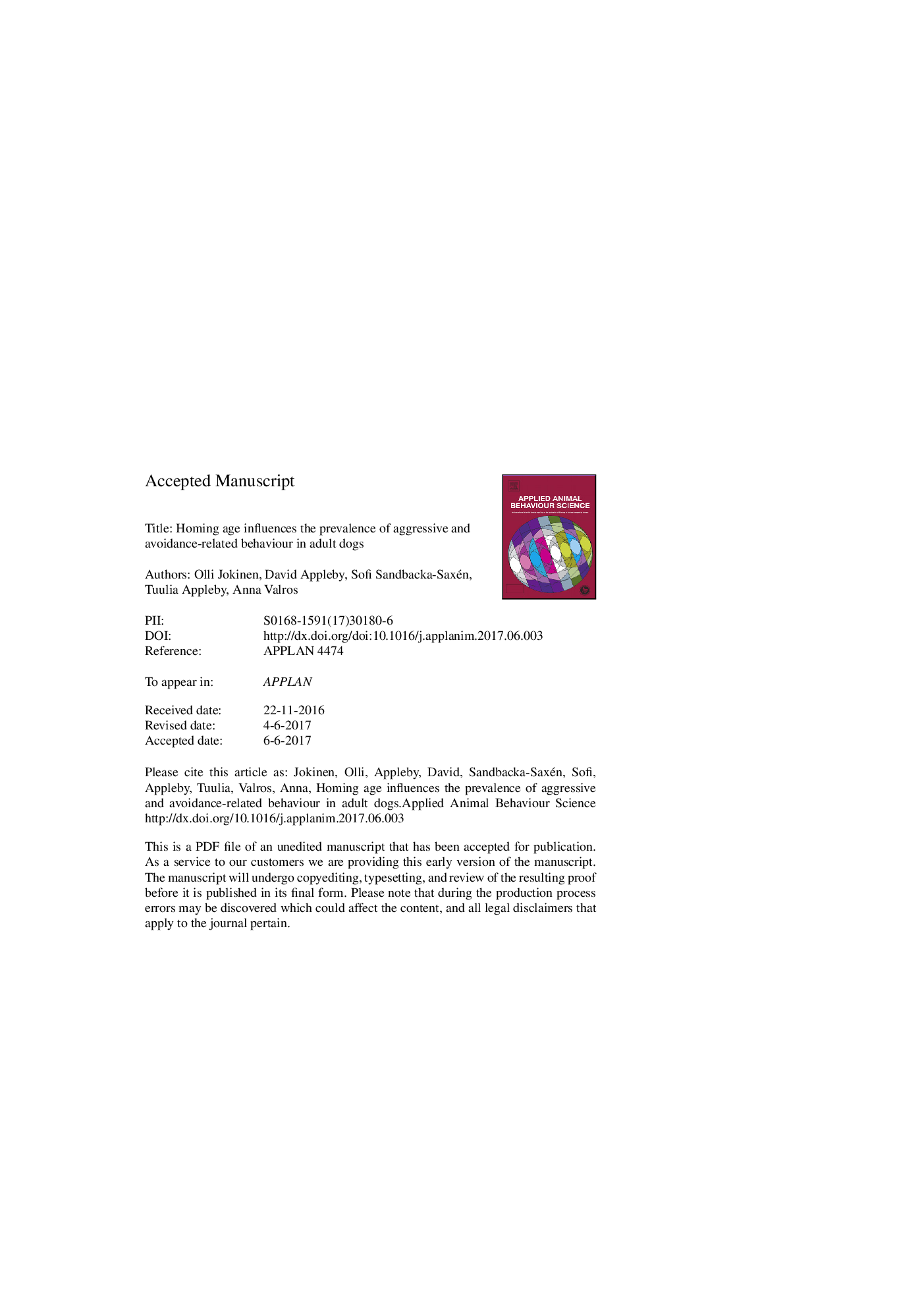| Article ID | Journal | Published Year | Pages | File Type |
|---|---|---|---|---|
| 5763252 | Applied Animal Behaviour Science | 2017 | 22 Pages |
Abstract
Online questionnaire-based data on frequencies of problematic behaviours (n = 3689) were analysed using Chi-Square, comparing adult dogs homed at 6-7 weeks (6-7), 8 weeks (8), 9-12 weeks (9-12) and 13-16 weeks (13-16). 31% were 6-7, 41% 8, 23% 9-12, 5% 13-16. If an overall association was observed, pairwise comparisons between homing age groups were conducted. All of the dogs included in the study came from domestic maternal environments, where the puppies were kept in the breeders' living quarters. Homing age was associated with avoiding, growling and snapping at unfamiliar people when away from the home environment (p = 0.004, p = 0.02 and p = 0.008, respectively); avoiding, barking at, growling at and snapping at unfamiliar people visiting the home (p = 0.02, p = 0.02, p = 0.04 and p = 0.03, respectively) and barking at unfamiliar dogs when away from the home environment (p = 0.001). With one exception, dogs homed later than 8 weeks, namely during weeks 9-12 and 13-16, had higher than expected prevalence of avoidance and aggressive behaviour than dogs homed at other ages. The exception being that for the measure, barking at unfamiliar dogs away from the home environment, there were higher than expected values in dogs homed at 8 and 13-16 weeks and lower in dogs homed at 6-7 and 9-12 weeks. This research supports the view that homing age is associated with instances of avoidance behaviour and some types of aggression in adult dogs.
Keywords
Related Topics
Life Sciences
Agricultural and Biological Sciences
Animal Science and Zoology
Authors
Olli Jokinen, David Appleby, Sofi Sandbacka-Saxén, Tuulia Appleby, Anna Valros,
